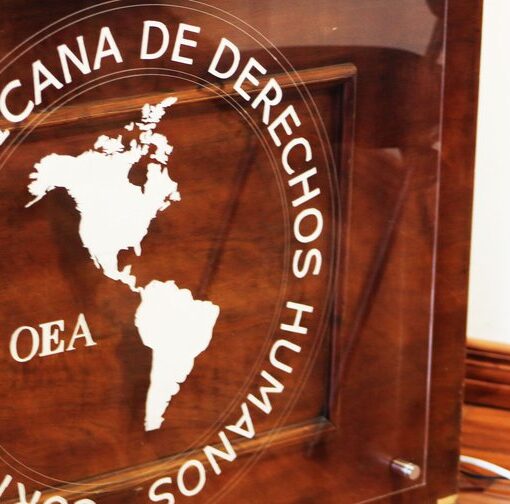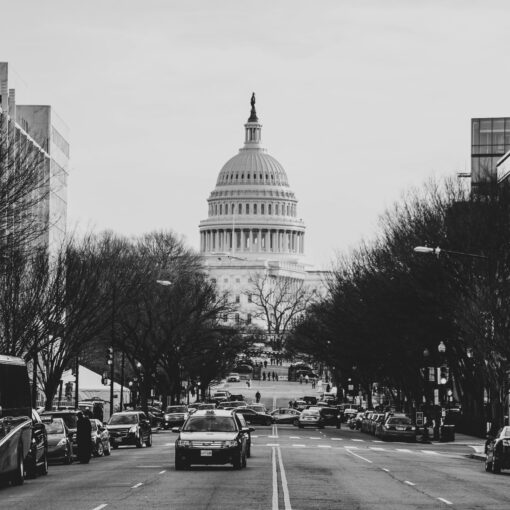 The first 100 days of the second Trump administration have proved volatile for local governments working to advance ambitious climate action. We have seen the freezing or termination of federal grants and other financial assistance, executive orders seeking to usurp state and local authority, the initiation of extensive deregulatory efforts, threats to green banks and nonprofit organizations, and significant developments in federal courts. This post offers a high-level state of play for local law and policymakers, community groups, and others working at the subnational level.
The first 100 days of the second Trump administration have proved volatile for local governments working to advance ambitious climate action. We have seen the freezing or termination of federal grants and other financial assistance, executive orders seeking to usurp state and local authority, the initiation of extensive deregulatory efforts, threats to green banks and nonprofit organizations, and significant developments in federal courts. This post offers a high-level state of play for local law and policymakers, community groups, and others working at the subnational level.
Funding Freeze: Litigation Developments
The weeks since the release and subsequent recission of OMB Memorandum M-25-13 ordering a “temporary pause” on most federal climate-related funding (among other policy areas) have been chaotic. There have been freezes (and at times unfreezes) on disbursements across federal agencies and programs, including for monies obligated under signed award agreements. Though the OMB memorandum was rescinded within days, an underlying pause on federal Inflation Reduction Act (IRA) and Infrastructure Investment and Jobs Act (IIJA) funding as directed by Section 7 of the Unleashing American Energy executive order (EO) remained in effect. Several federal courts have weighed in on aspects of the funding freeze, providing limited forms of relief to grantees. The picture of which grantees are covered by injunctive relief changes on a continual basis, as courts weigh new claims and appeals are lobbed with respect to existing ones. A fuller summary of litigation challenging aspects of the funding freeze can be found in a companion blog post.
Several preliminary injunctions may apply to grants and other forms of federal financial assistance that flow to or impact local governments. One thing to note about the injunctive relief provided in the cases to date is that it applies to “non-individualized” withholdings of funds or terminations of award agreements. In other words, the relevant agencies are prohibited from effectuating blanket or categorical pauses and cancellations on the awards covered by a particular injunction. Injunctions from the early cases – New York v. Trump and National Council of Nonprofits – cover broad funding freezes as ordered by the Unleashing American Energy EO and OMB Memorandum M-25-13, while the more recent Woonasquatucket River Watershed Council preliminary injunction covers all funds already awarded by the Environmental Protection Agency (EPA) and Departments of Housing and Urban Development, Energy, Interior and Agriculture under IRA and IIJA programs, whether or not effectuated under the EO or OMB Memo. But in each of these cases, only the agencies’ “non-individualized” actions are covered. Where an agency cites a different source of purported authority to directly target a specific awardee, another source of legal relief may need to be found.
Funding Freeze: Programmatic Developments
Numerous grant programs have been suspended or terminated across the federal agencies. This section addresses just a few that are directly relevant to local governments, but many other grants have been intermittently or permanently frozen.
In collaboration with the Department of Governmental Efficiency, EPA has attempted to cancel nearly 800 grant awards, variously citing “wasteful federal spending” and “wasteful DEI and environmental justice initiatives.” Implicated programs include the Collaborative Problem-Solving Cooperative Agreement Program, the Community Change Grant Program, and the Government-to-Government Program, all of which have local government grantees or partners. EPA’s Clean School Bus Program is another for which grantees have experienced withholdings of funding disbursements, including reimbursements for already-purchased buses. These programs may, in many instances, be subject to the relief afforded by the Woonasquatucket River Watershed Council preliminary injunction, and grantees should consider reaching out to their project officers if EPA grants have not been unfrozen. For terminated grants, it appears that at least some cities have filed internal agency appeals.
Additionally, the Federal Emergency Management Agency (FEMA) announced that it is canceling the Building Resilient Infrastructure and Communities (BRIC) program. BRIC funds up to 90 percent of the cost of local resilience projects – projects designed to protect communities and infrastructure in the event of major weather events. BRIC is widely relied upon, and local newspapers are reporting the potential loss of millions of dollars in funding for localities in Kentucky, Louisiana, Maryland, New Jersey, Florida, North Dakota, and Alaska. FEMA funding generally has been a subject at issue in New York v. Trump, and to the extent BRIC funds are payable directly to the plaintiff states, they may be covered by that case’s preliminary injunction. I am not aware of any cases specifically challenging the termination of BRIC grants to local governments.
Greenhouse Gas Reduction Fund
The IRA’s Greenhouse Gas Reduction Fund (GGRF) program is the largest of EPA’s program terminations by dollars. On March 11, 2025, EPA issued termination notices for two of the GGRF’s subprograms, the National Clean Investment Fund and the Clean Communities Investment Accelerator, which together have eight prime grantees and many more subgrantees. Several of the GGRF awardees and subs have sued EPA and its financial agent, Citibank, challenging the termination; more detail with respect to that litigation is discussed in a companion blog post on IRA rollbacks. The upshot of the GGRF litigation, for now, is that the program remains paused, and grantees may not draw on their awarded funds.
GGRF does not, for the most part, directly implicate local governments, but it is meant to fund clean energy, clean transportation, and energy efficiency investments in cities across the country, including by providing capital to community lenders like credit unions and community development financial institutions (CDFIs). A GGRF termination would threaten the financial viability of clean energy projects (making local clean energy goals more difficult to attain), undercut programs to upgrade and improve air quality in low-income homes, and deprive community lenders of funds to deploy to local clean energy, energy efficiency, and electric transportation projects.
Deregulatory Efforts
On March 12, EPA announced 31 agency actions “in the greatest and most consequential day of deregulation in U.S. history.” These actions include rolling back greenhouse gas emissions limits for power plants and vehicles, overhauling the social cost of carbon, reconsidering the endangerment finding, and shuttering diversity, equity, and inclusion and environmental justice offices within EPA. Of particular note is EPA’s plan to review the Endangerment Finding. The Endangerment Finding was EPA’s 2009 determination that greenhouse gases “endanger public health and… endanger public welfare.” Pursuant to the Clean Air Act and the 2007 Supreme Court decision in Massachusetts v. EPA, EPA is statutorily required to regulate greenhouse gas emissions once a determination such as the Endangerment Finding is made. In other words, the Endangerment Finding serves as the legal and scientific basis for EPA’s greenhouse gas regulations. If it is eliminated, EPA could more easily claim that limits on emissions from power plants and vehicle tailpipes are not needed. No formal process to revisit the Endangerment Finding has yet begun; when it does, local governments may wish to submit comments.
In general, federal environmental rules do not impose significant regulatory requirements on local governments. Rather, they complement a state or local government’s own efforts to reduce local pollution, especially in policy areas like vehicle emissions in which local governments are constrained by federal law in how they may regulate. When federal requirements are weakened or eliminated, more pollution results at the local level.
Rolling back EPA rules will generally require formal rulemakings (though the administration has at times tried to skirt this requirement), involving notice-and-comment processes in which local governments may wish to participate. In many instances, we can expect that EPA will attempt to repeal existing rules and replace them with weaker rules. In some instances, it may not replace repealed rules, particularly if the Endangerment Finding is weakened or eliminated. Most environmental rulemakings become subject to protracted litigation, and the same can be expected here. As of the time of this post, EPA has not published Federal Register notices to kick off the rulemaking processes identified on March 12. A more detailed state of play on regulatory rollbacks can be found in a companion blog post on Updates from the Sabin Center’s Climate Backtracker.
Attacks on State and Local Climate Laws
In April, President Trump signed an EO entitled Protecting American Energy from State Overreach, discussed earlier on this blog. The EO does little in itself, but it directs the U.S. Attorney General to compile a list of state and local policies relating to “‘climate change’ or involving ‘environmental, social, and governance’ initiatives, ‘environmental justice,’ carbon or ‘greenhouse gas’ emissions, and funds to collect carbon penalties or carbon taxes.” Until the attorney general’s report is complete, likely by sometime in early June, it is difficult to assess what local policies might be targeted and how, but it appears that the administration is considering litigation and threats to federal funding as two means of giving effect to the EO. Several other EOs could also have impacts in cities, but again, implementation is in the early stages.
Other more targeted attacks on local policies and programs may continue even outside of this EO and resulting recommendations from the attorney general. New York City’s congestion pricing program has been the subject of termination efforts by the U.S. Department of Transportation for much of the last three months. Transportation Secretary Sean Duffy first sent a letter to New York Governor Kathy Hochul in February to revoke federal authorization for the program. Nevertheless, New York did not halt congestion pricing, and the Secretary sent another letter in April threatening future highway funding and approvals to the State. The State has initiated litigation challenging the administration’s actions on this front. An accidentally-released document reveals that federal lawyers view their own legal arguments in the case as weak.
Reduction of the Federal Workforce
A core element of President Trump’s approach to governing is a significant reduction of the federal workforce. Federal agencies have shed or will soon lose thousands of employees through “fork in the road” buy-out offers (in which workers may resign in exchange for continued pay for a number of months) and reduction in force plans (RIFs). Smaller agency staffs will have implications both for policymaking and for local government-facing functions.
The EPA put several hundred employees with environmental justice and DEI responsibilities on notice that they will be laid off or transferred this summer. At the Department of Energy, reporting suggests that thousands of employees will depart the agency. While there is little public reporting on the Department of Energy’s Office of State and Community Energy Programs (SCEP) specifically, it appears that staff could be reduced. SCEP administers programs like the State and Local Solution Center, home energy rebates, and the Weatherization Assistance Program. The loss of staff from these and other offices across federal agencies are likely to make it more difficult for local government staff to communicate with their project officers and other contacts, including with respect to the status of their grant awards, ability to draw down grant funds, or to get answers to questions. Staff reductions in agency offices also stand to have programmatic and policy impacts that flow down to local governments. For example, EPA’s plans to fire many research scientists will eventually undermine its ability to develop science-informed regulations that protect vulnerable communities, while layoffs at the Department of Health and Human Services threaten the administration of the Low Income Home Energy Assistance Program (LIHEAP), which provides assistance to low-income households to cover the costs of heating and cooling.
Tax Credits and Elective Pay
The administration also has the IRA’s tax credits and elective pay mechanism in its sights, but changes have not yet been made. The reconciliation process, through which a change to tax credits and/or elective pay may occur, is likely to take at least through midsummer. This is a time to advocate in support of clean energy, clean vehicle, and vehicle charging tax credits, as well as for the continued lawfulness of elective pay. On February 7, 133 local elected officials sent a letter to House and Senate members expressing their support for elective pay, and it remains useful to equip federal electeds with the information they need to defend elective pay in budget negotiations. Unless Congress amends the tax code, local governments and other nontaxable entities may continue to file with the Internal Revenue Service (IRS) to claim elective pay for eligible projects that they complete. But, there again, staff losses could result in delays in the IRS processing of claims.
___________________________
The second Trump administration has proven chaotic for local governments, and there is no indication that the seas will smooth in the second 100 days. Many of the actions discussed in this post have yet to fully play out: litigation is ongoing; deregulatory announcements have been made but not yet published in the Federal Register; agencies are still in the process of effectuating executive orders; and Congress is developing and will advance legislation. At the Sabin Center, we’ll continue to monitor these developments to help equip local governments with the information they’ll need to navigate the shifting landscape.
Amy Turner is the Director of the Cities Climate Law Initiative at the Sabin Center for Climate Change Law at Columbia Law School.





